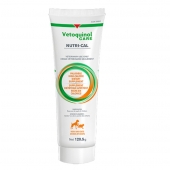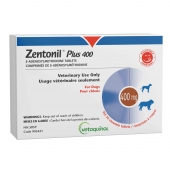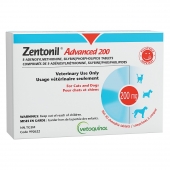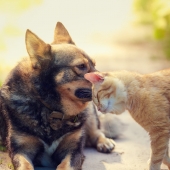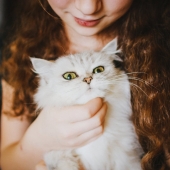Something feels off as you’re bathing your dog or grooming your cat. You notice a bump or lump you don’t remember previously being there. Is it normal? Many skin conditions are harmless to pets, but others can be serious. Here’s an overview of the most common ones.
Minor lumps and bumps on cats and dogs
Like humans, cats and dogs can suffer from zits, scrapes, insect bites and many other issues. The ones below are usually not a cause for worry but may still warrant a visit to your veterinary clinic if they become uncomfortable.
- Lipomas: These fatty tumours grow into soft, round lumps below the skin and are more frequently seen in overweight or older pets. They’re benign and usually don’t need to be removed unless they hinder your pet’s movement.
- Sebaceous cysts: Blocked oil glands may cause these pimple-like bumps to appear. They’ll typically heal on their own but may require treatment if they become infected or irritate your pet.
- Acne: Some cats may have blackheads on their chin or face, appearing as tiny bumps. If your cat uses plastic bowls for drinking or feeding, switching to metal may solve the issue. Your veterinarian may recommend a washing routine or topical cream to help control the acne.
- Skin tags: These fleshy, fibrous bumps may appear anywhere on your cat or dog, regardless of breed or age. They’re usually benign, though your veterinarian may recommend performing a biopsy to make sure.
- Abscesses: After your pet gets bitten, scratched or otherwise hurt, the area may become infected, swollen and filled with pus. Minor skin injuries usually heal by themselves, but bite wounds, any wound with foreign material, large abscesses, or heavily bleeding wounds should be seen by your veterinarian.
- Insect bites: Mosquitoes, black flies, bees, wasps and spiders may all sting or bite and leave behind red, swollen skin. Apply a cold compress to ease the discomfort and contact your veterinary clinic if the wound doesn’t improve.
Signs your cat or dog may need medical assistance
Contact your veterinary clinic if any of the skin conditions above seem to change size, colour or texture or ooze fluid. Also, keep an eye out for the ones below:
- Mast cell tumours: Cancerous tumours are often firm and of irregular shape, appearing either beneath the skin or on the surface. Your veterinarian will likely recommend surgically removing the tumour, submitting a biopsy, and performing additional tests to check if the cancer has spread. Chemotherapy and radiation treatment may be considered in some cases.
Mammary tumors are prevalent in female cats and dogs and are occasionally seen in male animals as well. Tumours typically appear in middle-aged or older animals near their mammary glands as small masses and may become quite large and even ulcerated before they’re noticed. Spaying a female dog or cat before her first heat cycle reduces the risk of developing mammary cancer to less than 0.5%[1],2.
Prolonged swelling after a vaccine injection: Vaccines may cause temporary swelling, as immune cells gather at the injection site. In rare cases, these cells can turn into a malignant tumour. Contact your veterinary clinic if your pet’s vaccination lump doesn’t subside after a week.

